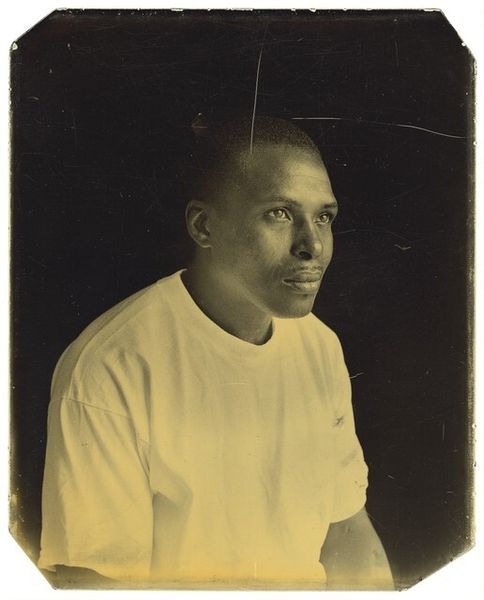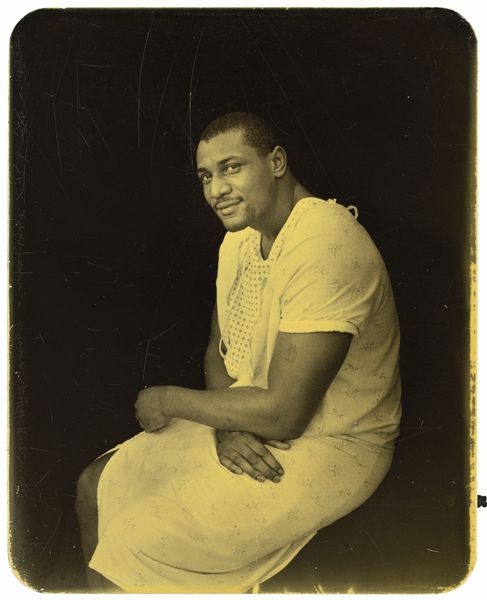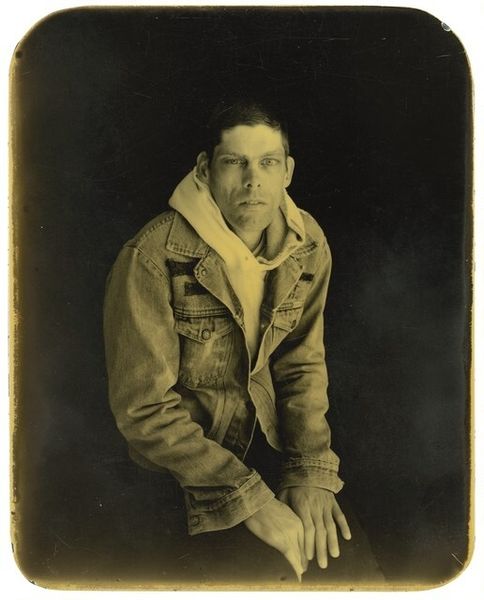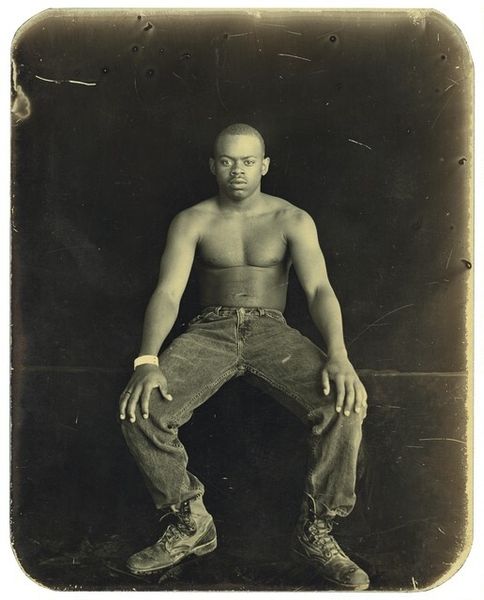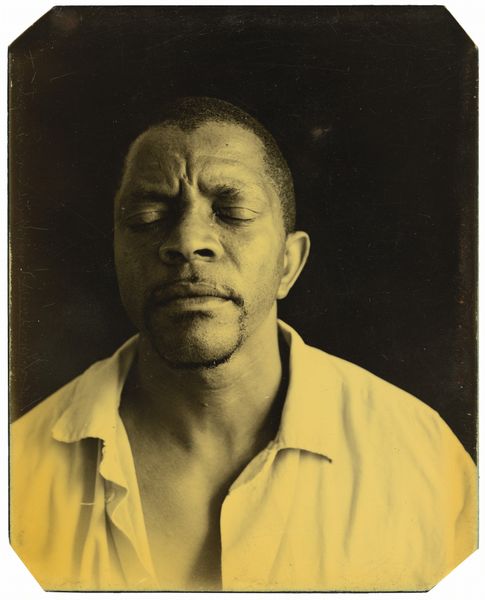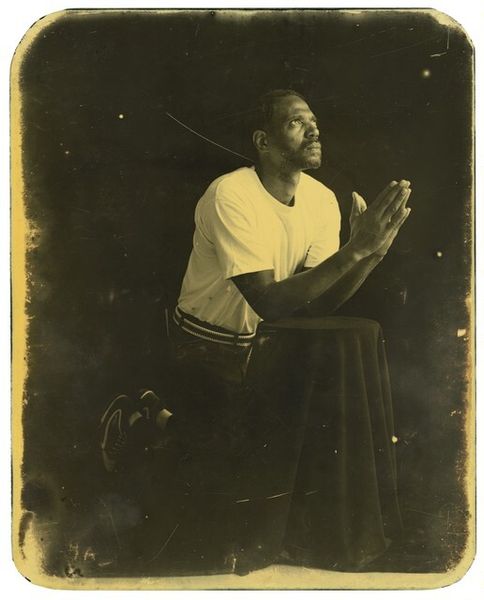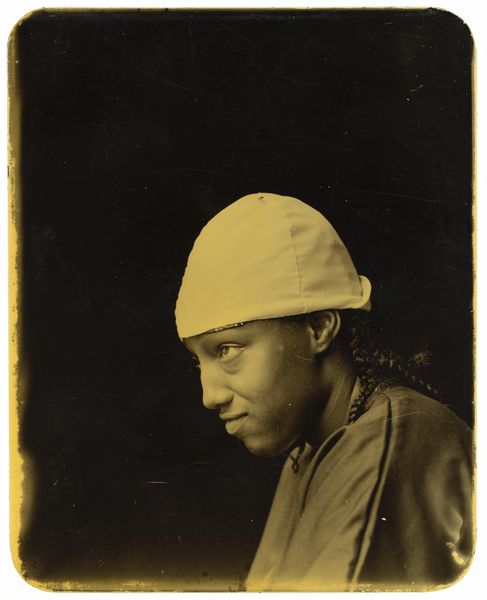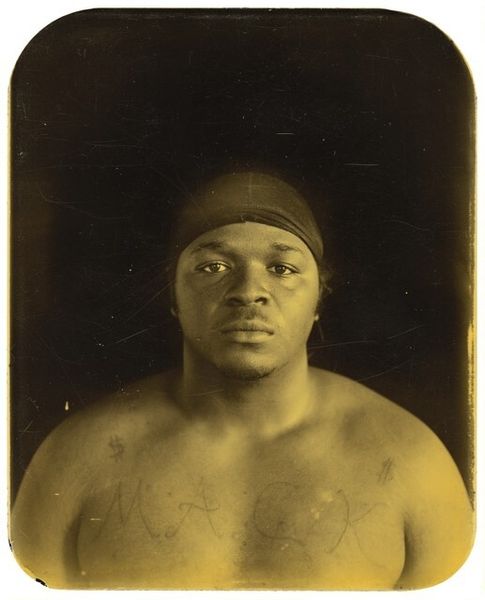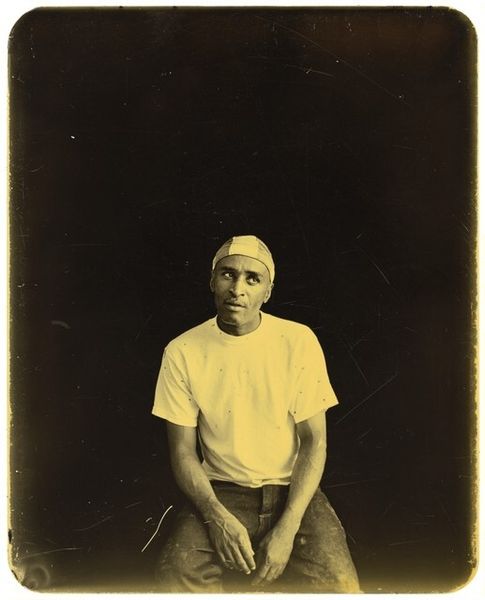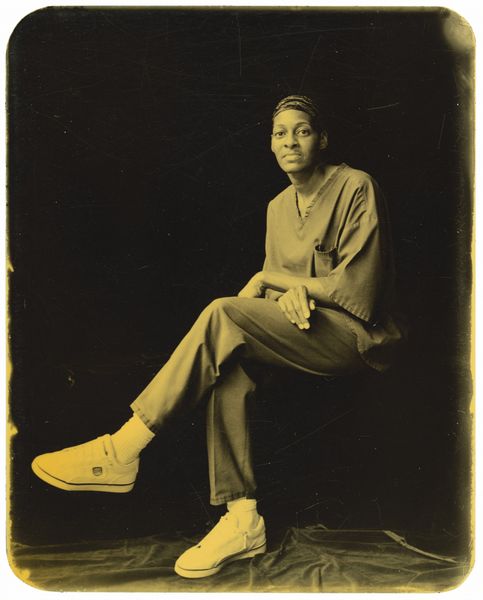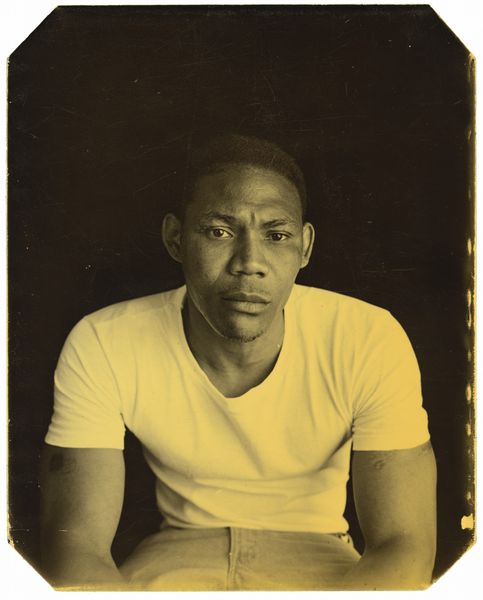
photography, gelatin-silver-print
#
portrait
#
photography
#
gelatin-silver-print
#
portrait photography
#
realism
Dimensions: image/plate: 12.6 × 10.1 cm (4 15/16 × 4 in.)
Copyright: National Gallery of Art: CC0 1.0
Editor: This gelatin-silver print by Deborah Luster, titled "Peter Davis, Angola, Louisiana", dates from the late 90s. The man’s gaze is so direct; it almost feels confrontational. What strikes you about this image? Curator: Considering the context—Angola being the Louisiana State Penitentiary, a place fraught with racial and social injustice—I see this image operating on several levels. Luster’s choice of the gelatin-silver print, reminiscent of 19th-century photography, subtly evokes historical narratives of incarceration and its disproportionate impact on African American men. What's the significance of the "Auto Zone" baseball cap in your opinion? Editor: I hadn't thought of the historical echoes in the print itself. The baseball cap, though... It seems jarringly contemporary against that historical backdrop, almost mundane. Maybe a symbol of hope or an attempt at normalcy within confinement? Curator: Precisely! It underscores the complex tension between the institutional realities and the individual's attempt to retain identity. It brings into question the commodification of even the incarcerated, right? Think about the politics of representation at play here. Editor: So, Luster is making us think about not just the individual, but the system and its effect on identity and public perception. That is some serious work. Curator: Indeed. The power lies in making the viewer question the broader structures of power and control that shape these individuals' lives and our perceptions of them. Editor: I never would have picked up on that. Thank you for clarifying the artwork for me; now I better understand the intent. Curator: Absolutely, it's all about unpacking the visual and historical cues to understand the socio-political statement. The role of museums is crucial to show how power imbalances work.
Comments
No comments
Be the first to comment and join the conversation on the ultimate creative platform.
